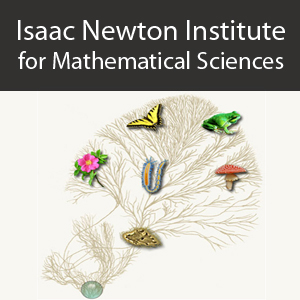Untangling tanglegrams
16 mins 18 secs,
14.94 MB,
MP3
44100 Hz,
125.11 kbits/sec
Share this media item:
Embed this media item:
Embed this media item:
About this item

| Description: |
St John, K (New York)
Thursday 20 December 2007, 14:20-14:40 PLGw03 - Future Directions in Phylogenetic Methods and Models |
|---|
| Created: | 2008-01-15 11:22 | ||
|---|---|---|---|
| Collection: | Phylogenetics | ||
| Publisher: | Isaac Newton Institute | ||
| Copyright: | St John, K | ||
| Language: | eng (English) | ||
| Distribution: |
World
|
||
| Credits: |
|
||
| Explicit content: | No | ||
| Aspect Ratio: | 4:3 | ||
| Screencast: | No | ||
| Bumper: | UCS Default | ||
| Trailer: | UCS Default | ||
| Abstract: | Given two phylogenetic trees on the same leaf set, how best can they be displayed? If the trees are presented "sideways" with their roots on the outside and leaves in the middle, we can join the corresponding leaves in the trees by edges. Call this diagram a tanglegram. The crossing number of a tanglegram is the number of leaf-leaf edges that cross. Work by Dwyer and Schreiber `04 (and rediscovered by Valiente and co-workers, WABI `07) show that the tanglegram with optimal crossing number can be found in polynomial time if one tree is fixed. We present several new results for the more general case when both trees can be rearranged to give the tanglegram with the minimal crossing number. |
|---|---|
Available Formats
| Format | Quality | Bitrate | Size | |||
|---|---|---|---|---|---|---|
| MPEG-4 Video | 480x360 | 1.84 Mbits/sec | 227.53 MB | View | Download | |
| WebM | 480x360 | 505.66 kbits/sec | 60.99 MB | View | Download | |
| Flash Video | 480x360 | 806.31 kbits/sec | 97.64 MB | View | Download | |
| iPod Video | 480x360 | 505.21 kbits/sec | 61.18 MB | View | Download | |
| QuickTime | 384x288 | 847.55 kbits/sec | 102.63 MB | View | Download | |
| MP3 * | 44100 Hz | 125.11 kbits/sec | 14.94 MB | Listen | Download | |
| Windows Media Video | 478.56 kbits/sec | 57.95 MB | View | Download | ||
| Auto | (Allows browser to choose a format it supports) | |||||

